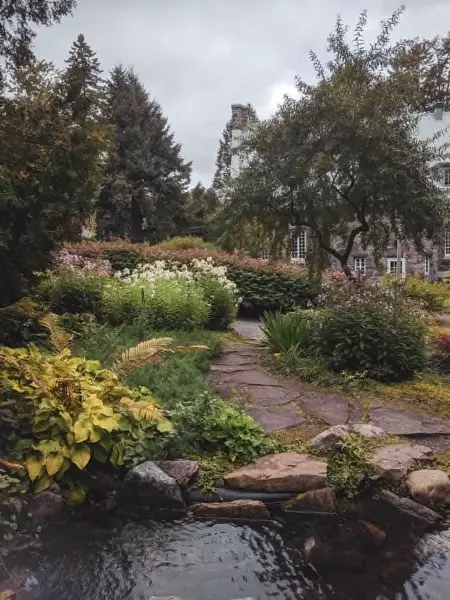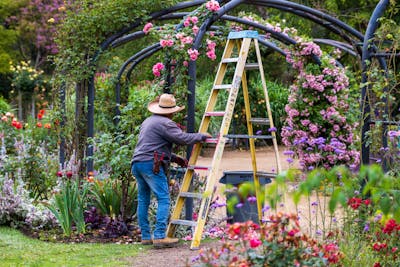Therapeutic gardens have risen in trend for the past few decades, and rightfully so.


Nature holds immense power to heal your body and soul. A brief walk in healing greens can calm your raging thoughts and drag you onto a tranquil path.
Physicians, Psychologists, Neurologists, and Scientists have been emphasizing the positive effects of therapeutic gardens. Today, we are here to familiarize you with the therapeutic gardens and their amazing benefits. Let’s dial into it.
Introduction to Therapeutic Gardens
Therapeutic gardens are outdoor green spaces that improve human health both physically and mentally. Their magic can help the sick to recover quickly and effectively.
Nursing homes, hospitals, treatment centers, and convalescent facilities have healing gardens to boost healthiness. The plants and paths are thoughtfully designed to allow physical activity along with contemplative moments.


So, If you have a loved one in any of such facilities, send flowers to bring their mood up and encourage them to take a routine walk in the therapeutic garden.
Main Types of Therapeutic Gardens
Therapeutic gardens are designed with a specific goal in mind, and therefore, each type differs from the other in one way or the other. According to an International Journal of Architectural Research, healing gardens are classified into five types as follows:
Meditative Gardens
As the name represents, Meditative gardens portray a serene and peaceful vibe to encourage meditation. These gardens often contain therapeutic plants that attract beautiful butterflies and birds to create a healthy amalgam of wildlife, flora, and humans.
The environment of meditative gardens is stress-free and rejuvenating, helping you to restore physical and emotional balance. You can process stressful events in your life with a calm mind.
These gardens are especially helpful for people with any kind of psychological trauma.
Healing Gardens
Healing gardens tend to heal your mind, body, and soul altogether. The vibrant plants, fragrant flowers and separate water bodies at distances encourage natural healing not only for patients but for every person.
Many healing gardens have special activities held by facilities to help struggling people meet their healing goals. They have horticulture activities where specialists and experts teach everyone the skills. Meanwhile, therapists document the impact of these activities on the healing of patients.
It is unfortunate that not all healing gardens are this thorough and filled with activities. Still, even without them, the sensation of being surrounded by a garden setting is healing in itself.
Enabling Gardens
This type of garden has a more focused goal for physical recovery. Staying in hospitals can deflate the confidence of patients and disturb their mental and physical scale. Enabling gardens aims to restore this imbalance by providing horticulture activities. You can grow plants, do rubbish disposal, or be involved in other garden tasks to boost strength and coordination skills.


Everyday activities in the garden can boost confidence and provide a sense of accomplishment to people who have sustained severe injuries or traumatic events.
Rehabilitative Gardens
Rehabilitative gardens are unique where not only patients heal but also the gardens. Yes, we’re talking about not only the rehab of patients here but also the gardens.
Man-made elements damage the soil and lead to potential erosion issues; a rehabilitative garden gathers the communities together to heal the soil and humans.
People work in harmony to heal the gardens and get socially familiarized with each other.
Restorative Gardens
Restorative gardens are specifically designed to relieve stress and restore peace of mind after traumatic events. Whether you have PTSD, depression, or anxiety, restorative gardens can help collect your shattered nerves and heal in the arms of nature.
Benefits of Therapeutic Gardens
While therapeutic gardens are heavenly for patient recovery, they are equally beneficial for normal people. Some of the benefits include:
- Opportunity to connect with nature and interact with others.
- Learning new skills in horticulture
- Development of stamina, deeper concentration, hand-eye coordination, fine motor skills, and a sense of control.
- Reduce negative emotions and boost positive mood.
- Blocks stressful triggers and thoughts.
And so much more.
The Bottom Line
Therapeutic gardens are a sweet escape to the land of healing. With the hassle of today’s era and fast-paced life, we are suffering from emotional and mental stress without knowing. Everyday walks in therapeutic gardens can help keep us optimistic and full of life energy.
